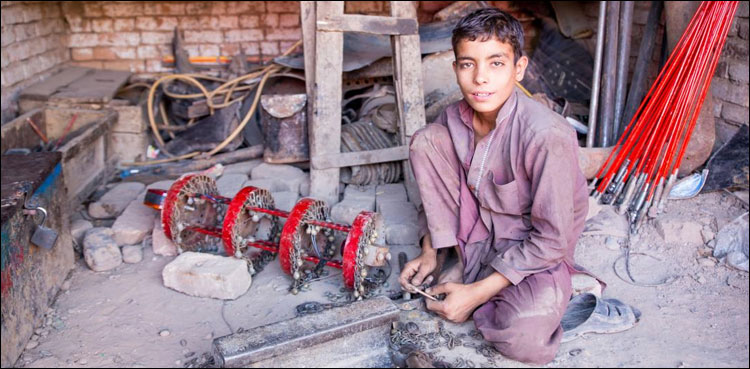Today, the awareness day against forced child labor is being celebrated all over the world, including Pakistan. According to the United Nations, 1 out of every 5 children around the world is forced to do forced labor.
The United Nations Children’s Organization UNICEF says that 160 million children between the ages of 5 and 17 around the world are currently forced to work and earn a living.
One of the reasons for this is the wars, civil wars, natural disasters, and migrations in different countries of the world, which deprive children of their childhood and throw them into the hot furnace of life.
The Covid-19 pandemic has also increased overall world poverty and created more hardships for the low-income group.
Pakistan is also one of the countries in the world where the negative trend of child labor is increasing instead of decreasing.
According to the United Nations, the number of out-of-school children between the ages of 5 and 16 in Pakistan is 22.28 million, making Pakistan the second largest number of out-of-school children in the world.
A large number of these uneducated children are forced to do forced labour, estimated at 1.2 million.
According to sociologists and economists, the reason for the increase in child labor in the country is generally attributed to rising poverty and inflation, which in their opinion is not correct.
Experts say that children who work are never fully supporting their families economically, but what they are earning is a pittance.
According to him, people employ child labor because it is always cheap, even if they give children 1000 or 500 rupees per month, you cannot say that this small amount will support the whole family. .
Pakistan also has laws against child labor, but they are inadequate and ineffective. Experts say that unaffordable educational facilities and poverty could push more children into the quagmire of forced labour.
Comments
(function(d, s, id) {
var js, fjs = d.getElementsByTagName(s)[0];
if (d.getElementById(id)) return;
js = d.createElement(s); js.id = id;
js.src = “//connect.facebook.net/en_US/sdk.js#xfbml=1&appId=1763457670639747&version=v2.3”;
fjs.parentNode.insertBefore(js, fjs);
}(document, ‘script’, ‘facebook-jssdk’));


